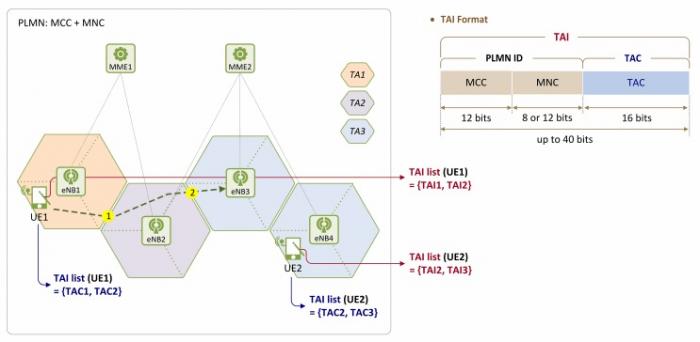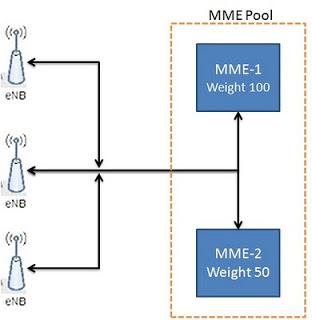Looks like that you want to know the signification of tracking area (there is no such thing called enodeB pool as far as I know) and MME Pool. Both the concepts are there for load balancing and network level redundancy at different level.
Tracking Area:
When paging the UE, the EPC indicates a 'geographical area' that is translated within E-UTRAN to the actual cells that shall be paged. A 'geographical area' could be a tracking area or a list of tracking areas.

The MME initiates the paging procedure by sending the PAGING message to each eNB with cells belonging to the tracking area(s) in which the UE is registered. Each eNB can contain cells belonging to different tracking areas, whereas each cell can only belong to one TA.
MME Pool
A MME in the network is identified by MME code and Group id. Each MME will have a weight factor configured that is conveyed to eNB during initial S1 setup. An eNB can talk to multiple MMEs in a pool. Based the weight factor eNB will decide which MME can be loaded with calls to what level. Assume that an eNB is communicating with 2 MMEs in a pool. MME-1 has weight of 100 and MME-2 has weight of 50. This means eNB, out of 3 UE attaches, will forward 2 attaches to MME-1 and 1 attach to MME-2. If in case MME-1 is down, then all calls will be routed to MME-2. This is one way of achieving load balancing and redundancy.

If the MME is feeling overloaded, then it may also send Overload Start message to eNB asking it not to forward any calls to it. If necessary resources are available then MME may send Overload Stop indicating that it is ready to accept new calls.
Another way of achieving load balancing is using DNS at eNB. If UE is NOT connecting for the first time then it will populate GUMMEI to eNB in one of the RRC messages. Based on the GUMMEI eNB can perform a DNS query to obtain MME information and forward the UE messages to that particular MME. If the selected MME is not responding then eNB may forward the call to next available MME in the pool.
